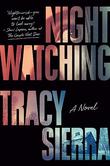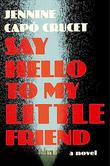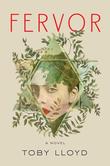
by Raina Telgemeier ; illustrated by Raina Telgemeier ‧ RELEASE DATE: April 30, 2019
Honest and encouraging, this will get young storytellers started—and perhaps leave them wishing for more.
A guide on how to distill the extraordinary from your own life and find a story to tell.
The unabashed Telgemeier (Smile, 2010, etc.) once more shares her personal experiences on storytelling in a how-to book on finding your own story. Explaining that for her, “the process of creating Smile was therapeutic,” Telgemeier coaxes readers to think about their own experiences by posing questions that will encourage closer looks into themselves, their environments, their families, their personal travel and school stories, their sources of inspiration, and even those supernatural elements that fascinate them. Although the book focuses heavily on creating stories from personal experience, the skills developed are meant to naturally translate into other types of storytelling. By beginning in the known world, Telgemeier gives readers a solid foundation from which to launch their artistic exploration. The book focuses mostly on the brainstorming process, offering lists of questions with space for answers, but it also provides other spaces to write full stories and to storyboard ideas. Readers also get useful tips, such as starting with loose shapes when drawing faces, with step-by-step instructions on how to illustrate faces and facial expressions. It’s very much a place to start rather than a full-on manual, and it does not offer a bibliography for kids who want to pursue graphic storytelling further.
Honest and encouraging, this will get young storytellers started—and perhaps leave them wishing for more. (Nonfiction novelty. 8-12)Pub Date: April 30, 2019
ISBN: 978-1-338-35384-6
Page Count: 144
Publisher: Graphix/Scholastic
Review Posted Online: March 26, 2019
Kirkus Reviews Issue: April 15, 2019
Share your opinion of this book
More by Raina Telgemeier
BOOK REVIEW
by Raina Telgemeier ; illustrated by Raina Telgemeier
BOOK REVIEW
by Raina Telgemeier ; illustrated by Raina Telgemeier
BOOK REVIEW
by Raina Telgemeier ; illustrated by Raina Telgemeier

by Raina Telgemeier ; illustrated by Raina Telgemeier ‧ RELEASE DATE: Sept. 17, 2019
With young readers diagnosed with anxiety in ever increasing numbers, this book offers a necessary mirror to many.
Young Raina is 9 when she throws up for the first time that she remembers, due to a stomach bug. Even a year later, when she is in fifth grade, she fears getting sick.
Raina begins having regular stomachaches that keep her home from school. She worries about sharing food with her friends and eating certain kinds of foods, afraid of getting sick or food poisoning. Raina’s mother enrolls her in therapy. At first Raina isn’t sure about seeing a therapist, but over time she develops healthy coping mechanisms to deal with her stress and anxiety. Her therapist helps her learn to ground herself and relax, and in turn she teaches her classmates for a school project. Amping up the green, wavy lines to evoke Raina’s nausea, Telgemeier brilliantly produces extremely accurate visual representations of stress and anxiety. Thought bubbles surround Raina in some panels, crowding her with anxious “what if”s, while in others her negative self-talk appears to be literally crushing her. Even as she copes with anxiety disorder and what is eventually diagnosed as mild irritable bowel syndrome, she experiences the typical stresses of school life, going from cheer to panic in the blink of an eye. Raina is white, and her classmates are diverse; one best friend is Korean American.
With young readers diagnosed with anxiety in ever increasing numbers, this book offers a necessary mirror to many. (Graphic memoir. 8-12)Pub Date: Sept. 17, 2019
ISBN: 978-0-545-85251-7
Page Count: 224
Publisher: Graphix/Scholastic
Review Posted Online: May 11, 2019
Kirkus Reviews Issue: June 1, 2019
Share your opinion of this book
More by Raina Telgemeier
BOOK REVIEW
by Raina Telgemeier ; illustrated by Raina Telgemeier
BOOK REVIEW
by Raina Telgemeier ; illustrated by Raina Telgemeier
BOOK REVIEW
by Raina Telgemeier ; illustrated by Raina Telgemeier
More About This Book
PROFILES

by Jordan Sonnenblick ; illustrated by Jordan Sonnenblick ‧ RELEASE DATE: Feb. 2, 2021
Though a bit loose around the edges, a charmer nevertheless.
Tales of a fourth grade ne’er-do-well.
It seems that young Jordan is stuck in a never-ending string of bad luck. Sure, no one’s perfect (except maybe goody-two-shoes William Feranek), but Jordan can’t seem to keep his attention focused on the task at hand. Try as he may, things always go a bit sideways, much to his educators’ chagrin. But Jordan promises himself that fourth grade will be different. As the year unfolds, it does prove to be different, but in a way Jordan couldn’t possibly have predicted. This humorous memoir perfectly captures the square-peg-in-a-round-hole feeling many kids feel and effectively heightens that feeling with comic situations and a splendid villain. Jordan’s teacher, Mrs. Fisher, makes an excellent foil, and the book’s 1970s setting allows for her cruelty to go beyond anything most contemporary readers could expect. Unfortunately, the story begins to run out of steam once Mrs. Fisher exits. Recollections spiral, losing their focus and leading to a more “then this happened” and less cause-and-effect structure. The anecdotes are all amusing and Jordan is an endearing protagonist, but the book comes dangerously close to wearing out its welcome with sheer repetitiveness. Thankfully, it ends on a high note, one pleasant and hopeful enough that readers will overlook some of the shabbier qualities. Jordan is White and Jewish while there is some diversity among his classmates; Mrs. Fisher is White.
Though a bit loose around the edges, a charmer nevertheless. (Memoir. 8-12)Pub Date: Feb. 2, 2021
ISBN: 978-1-338-64723-5
Page Count: 208
Publisher: Scholastic
Review Posted Online: Nov. 17, 2020
Kirkus Reviews Issue: Dec. 1, 2020
Share your opinion of this book
More by Jordan Sonnenblick
BOOK REVIEW
BOOK REVIEW
BOOK REVIEW
© Copyright 2024 Kirkus Media LLC. All Rights Reserved.
Hey there, book lover.
We’re glad you found a book that interests you!
We can’t wait for you to join Kirkus!
It’s free and takes less than 10 seconds!
Already have an account? Log in.
OR
Trouble signing in? Retrieve credentials.
Welcome Back!
OR
Trouble signing in? Retrieve credentials.
Don’t fret. We’ll find you.





